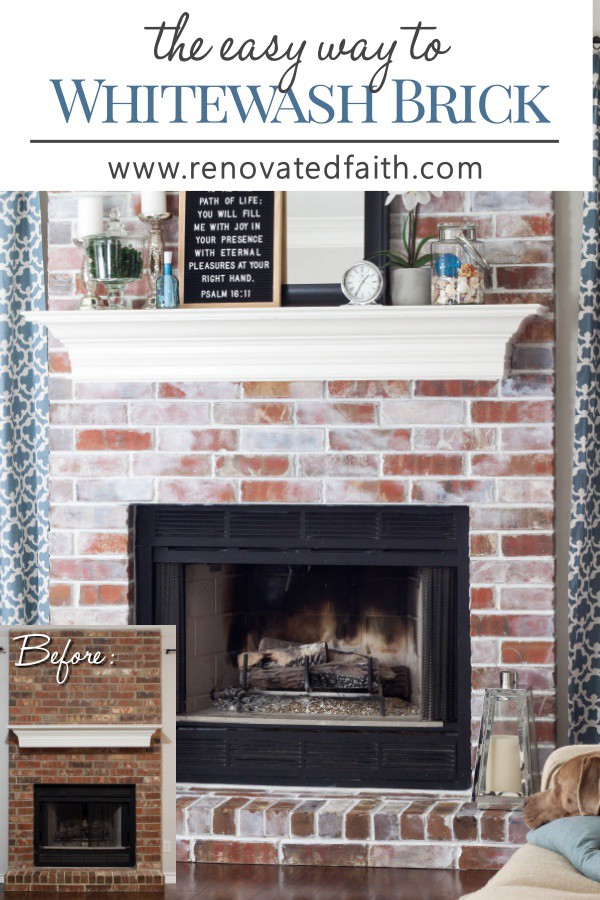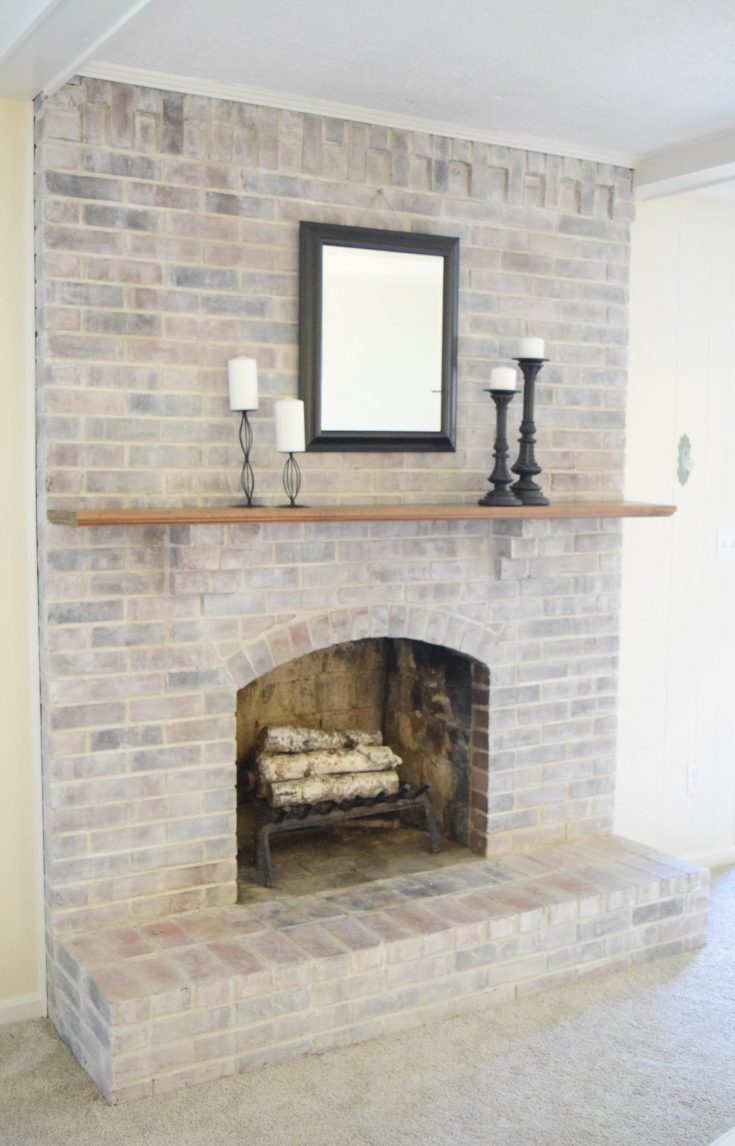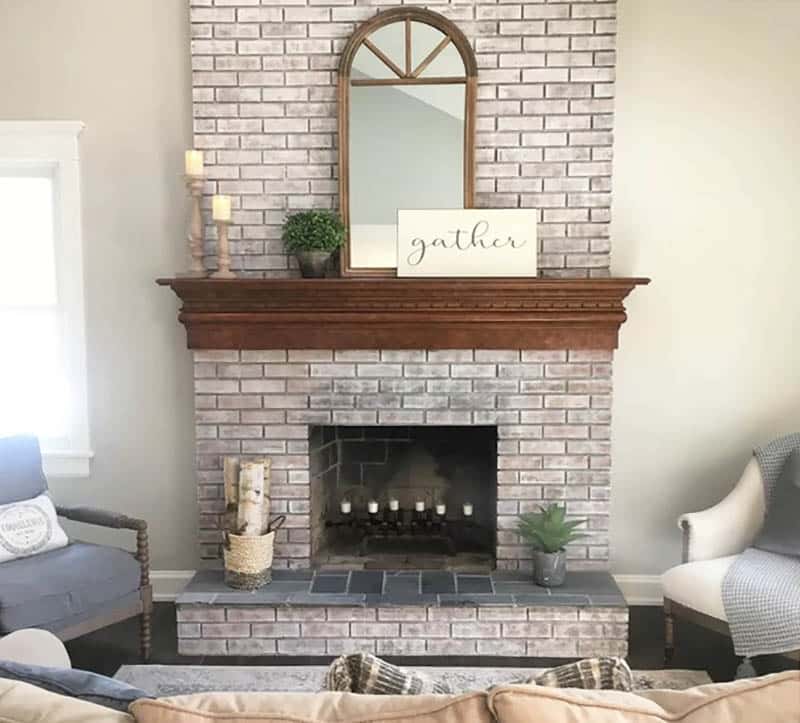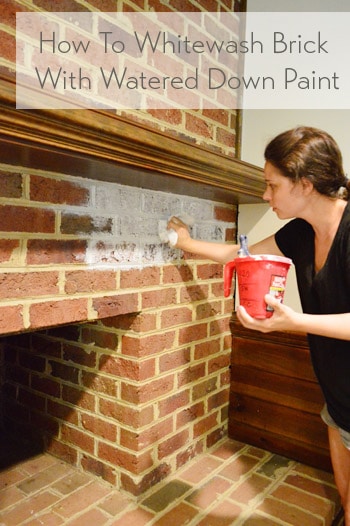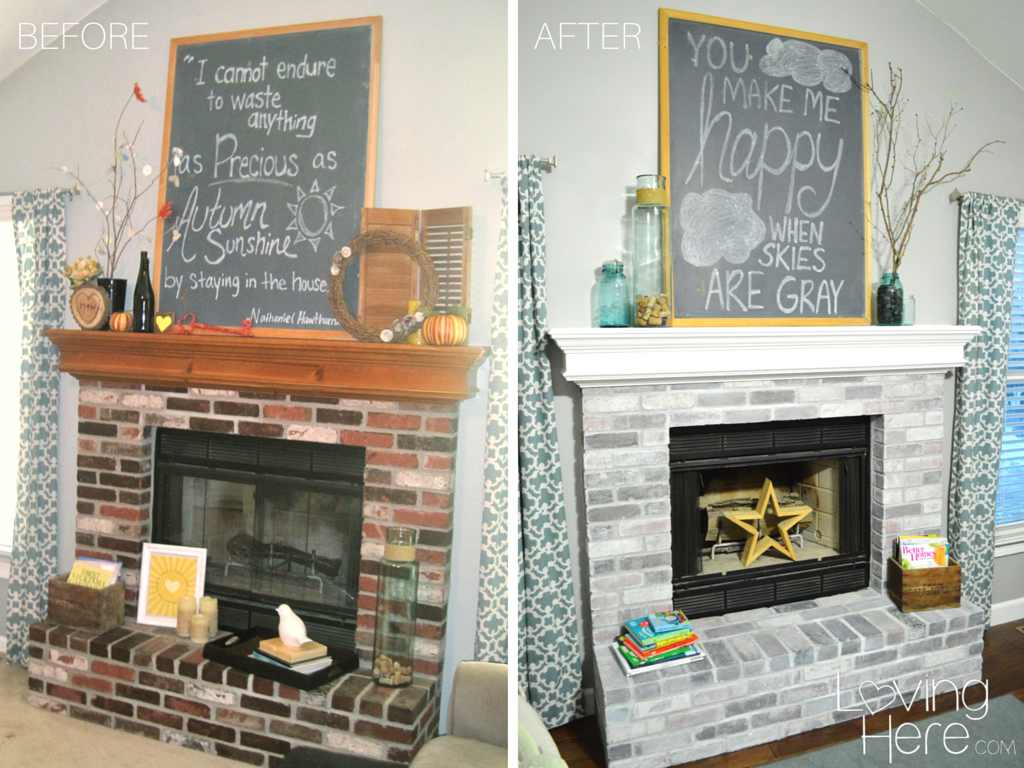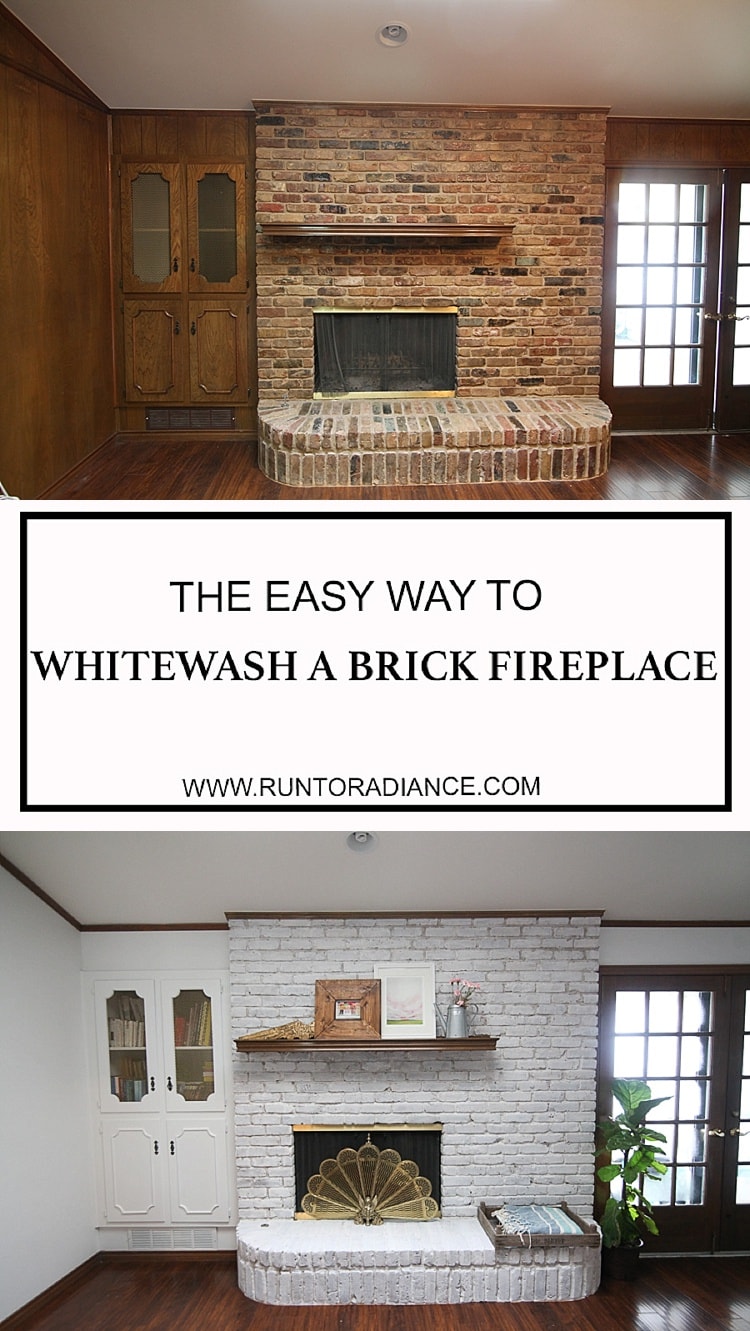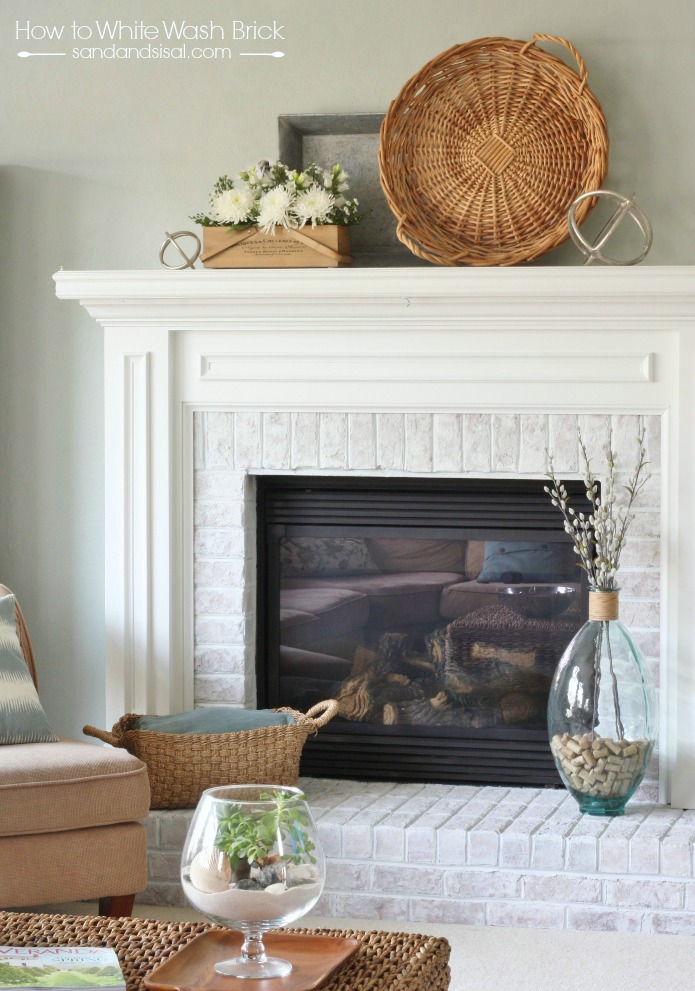A paint wash treatment offers an ideal middle ground for homeowners who want to refresh their brick fireplace without fully concealing its natural character. This technique allows the brick’s texture and subtle color variations to show through while muting intense tones or updating outdated colors. Unlike solid painting, washing preserves the masonry’s organic appeal while providing a lighter, brighter aesthetic. Let’s discuss how to achieve the perfect paint wash for your brick fireplace.
Understanding Paint Wash Technique
A paint wash involves diluting paint with water to create a translucent coating. The typical ratio ranges from 1:4 to 1:6 paint to water, depending on desired opacity. This thin mixture settles into the brick’s pores while lightly coating the surface, allowing the texture to remain visible. The technique works particularly well on rough, porous bricks where the wash can highlight natural variations. Smooth or glazed bricks may require a stronger solution or multiple applications.
Application methods affect the final look. Brushing on the wash with a stiff-bristle brush emphasizes texture as the bristles work pigment into crevices. Rag wiping creates softer, more even coverage by removing excess wash from the brick faces. Spray applications followed by back-brushing provide uniform distribution but require more masking of surrounding areas. Experiment with small sections to determine which method best enhances your brick’s unique characteristics.
The wash’s transparency means that the brick color significantly influences results. Dark red bricks washed with white become muted pinkish tones, while tan bricks develop a weathered limestone appearance. Test different wash colors on inconspicuous areas or spare bricks first. Remember that washes dry lighter than they appear when wet allow samples to dry completely before evaluating. Multiple thin coats build color gradually while maintaining transparency better than one thick application.
Preparation Steps
Thorough cleaning ensures proper paint adhesion. Remove soot and grease with trisodium phosphate (TSP) solution and stiff brush, rinsing thoroughly. Address efflorescence (white mineral deposits) with muriatic acid wash if present, following safety precautions. Repair cracked mortar joints before washing—the technique will highlight rather than conceal structural flaws. Protect surrounding surfaces with painter’s tape and drop cloths, especially important with the drippy wash application.
Surface conditioning improves results. Lightly sanding glossy bricks helps the wash adhere. Apply masonry conditioner to extremely porous bricks to prevent uneven absorption. For previously painted brick, determine if the existing paint is latex (can be washed over) or oil-based (needs priming). Remove loose or peeling paint completely, regardless of type. A clean, sound surface ensures the wash wears evenly over time.
Masking considerations differ from solid painting. Since washes are translucent, tape lines become more noticeable if the wash bleeds underneath. Use high-quality painter’s tape pressed firmly into mortar joints. For extra protection, run a putty knife along the tape edge to seal it. Consider removing mantels or accessories rather than masking around intricate details. Protect hearths with rosin paper taped at edges rather than plastic, which could cause pooling.

Paint Selection
Latex paints work best for most wash applications. Their water solubility makes dilution and cleanup easy. Flat or matte sheens maintain the brick’s natural appearance better than satin or semi-gloss. White and light gray washes create classic looks, while pale blues or greens offer subtle color shifts. Avoid dark colors that tend to obscure rather than enhance brick texture when diluted.
Milk paint provides authentic historical finishes for older homes. This powdered paint mixes with water to create naturally matte, breathable washes. The limited color palette suits traditional interiors beautifully. Milk paint’s slight unpredictability—variegation between bricks—adds to the charm but requires acceptance of imperfect uniformity. A topcoat of clear wax or hemp oil protects the finish while maintaining vapor permeability.
Chalk paint washes offer one-coat coverage with excellent adhesion. These thick paints can be diluted more than traditional latex for customized transparency. The matte finish naturally complements brick textures. Wax or water-based topcoats increase durability for fireplace applications. Chalk paint’s ease of use makes it ideal for beginners attempting their first wash project.
Application Process
Work in manageable sections—about 3-4 square feet at a time. Dip the brush lightly in wash and apply using irregular strokes to avoid obvious patterning. Let the mixture pool slightly in mortar joints for natural shadow effects. Work vertically then horizontally to ensure full coverage in all crevices. Step back periodically to check consistency across the entire surface.
Timing affects the wash’s final appearance. For maximum texture emphasis, wipe back the wash with a damp cloth 5-10 minutes after application, leaving more pigment in recessed areas. For uniform coverage, leave undisturbed until dry. Temperature and humidity influence working time—cool, dry conditions allow more control. Hot weather may require smaller work areas as the wash dries quickly.
Layering creates depth in the finish. After the initial wash dries (2-4 hours), assess if additional coats are needed. Subsequent layers should use slightly thicker paint ratios to gradually build coverage without obscuring texture. Focus extra applications on areas needing more opacity while lightly dragging the brush over already-achieved sections to maintain consistency.
Design Integration
Complementary wall colors enhance washed brick. Soft whites or pale grays on surrounding walls make the fireplace a subtle focal point. For bold contrast, pair with deep navy or charcoal walls—the wash’s transparency prevents visual competition. Continue the wash technique onto adjacent brick walls or hearths for cohesive flow. Consider washing the mantel in a slightly different shade or opacity to define it from the firebox surround.
Lighting considerations differ from untreated brick. Washed surfaces reflect more light, brightening dark rooms. Adjustable sconces or picture lights allow highlighting the texture at different times. Natural sunlight may require window treatments to prevent excessive glare on lighter washes. The finish’s matte quality diffuses light beautifully without creating shiny hotspots.
Decor choices should respect the wash’s subtlety. Simple iron fireplace tools maintain rustic charm without overwhelming the softened brick. Minimalist art pieces or mirrors above the mantel let the texture shine as the main attraction. For holidays, neutral wreaths and greenery complement rather than compete with the finish. Avoid cluttering the hearth with numerous small objects that disrupt the cohesive washed surface.
Maintenance and Care
Regular dusting preserves the wash’s appearance. Use a soft bristle brush attachment on vacuums or a microfiber duster to remove soot and debris. The matte finish shows dust more than glossy surfaces but cleans easily. Avoid abrasive scrubbers that could wear through the thin wash layer—gentle sponges or cloths suffice for spot cleaning.
Addressing soot stains requires special care. Create a paste from baking soda and water, applying it gently to affected areas. Let sit 15 minutes before rinsing with clean water. For persistent stains, use diluted vinegar sparingly—test first as acidity may alter the wash’s appearance. Reseal any areas where the wash wears thin to prevent uneven fading over time.
Long-term touch-ups maintain consistency. Keep leftover wash mixture or note the precise paint/water ratio for future repairs. Feather edges when spot-fixing to blend with surrounding areas. The wash’s inherent variability means small touch-ups often blend better than with solid paint. For significant wear, consider reapplying wash to the entire surface rather than attempting to match aged sections.
How does paint washing differ from whitewashing a brick fireplace?
Paint washing uses latex or acrylic paints diluted with water for more controlled, durable results compared to traditional lime-based whitewash. Washes offer a wider color range beyond white and better adhesion to modern bricks. The paint wash technique allows building opacity gradually through multiple thin coats, while whitewash typically provides a single consistent finish. Paint washes also resist flaking better over time and don’t require the same safety precautions during application as caustic lime washes.
Can you remove paint wash from brick later?
Removing paint wash is significantly easier than stripping solid paint but still challenging. The translucent coating penetrates brick pores deeply. Chemical paint strippers formulated for masonry work best, applied with stiff brushes to agitate the softened wash. Pressure washing risks damaging brick if not done carefully at low PSI. Some residual pigment may remain in the brick’s texture even after stripping. Test removal methods in inconspicuous areas first to assess results before committing to full reversal.
Does paint wash work on all brick types?
Most common brick types accept washes well, though results vary by porosity. Rough, textured bricks show the most dramatic effects as washes highlight their dimensional qualities. Smooth face bricks or glazed bricks may require additional coats to achieve visible transformation. Extremely porous bricks might absorb wash unevenly—applying a masonry conditioner first helps regulate absorption. Always test on a small section, as some manufactured bricks contain dyes that could interact unexpectedly with washes.
How long does a painted wash finish last on brick?
Properly applied washes typically last 5-10 years before needing refreshing. High-traffic areas around the firebox opening may wear faster, while protected upper sections remain intact longer. The finish’s longevity depends on brick porosity, wash formula, and environmental factors like moisture exposure. Washes tend to fade gracefully rather than peel like solid paint, often requiring just a new topcoat rather than complete reapplication. Regular cleaning and avoiding harsh scrubbing extends the finish’s life significantly.
Can you paint wash just the interior firebox bricks?
Washing only the firebox creates interesting contrast but requires careful material selection. Use high-temperature resistant paint (rated above 200°F) for any surfaces near flames. Keep washes at least 12 inches from the actual fire area unless using specialty heat-resistant coatings. The technique works well for surrounds and non-combustible firebox liners, muting soot stains while maintaining texture. For open fireplaces, consult safety guidelines before applying any finish to interior surfaces exposed to direct flame.
What’s the best way to clean a paint washed brick fireplace?
Gentle cleaning preserves the wash’s delicate finish. Use a soft-bristle brush or sponge with mild detergent and warm water, working in small sections. Avoid abrasive cleaners or stiff brushes that could scratch the surface. Blot rather than scrub stubborn stains to prevent lifting the wash. Dry immediately with a clean towel to prevent water spotting. For routine maintenance, dust weekly with a microfiber cloth or electrostatic duster to prevent buildup that requires wet cleaning. Reapply protective wax or sealant annually in high-touch areas.
How To Whitewash A Brick Wall Or Fireplace
How to Whitewash Brick – Our Fireplace Makeover – Loving Here
Update a Brick Fireplace: How to Whitewash Brick the Easy Way
How to Whitewash Brick – Sand and Sisal
How To Whitewash Your Brick Fireplace
How to Whitewash a Brick Fireplace
Related Posts:
